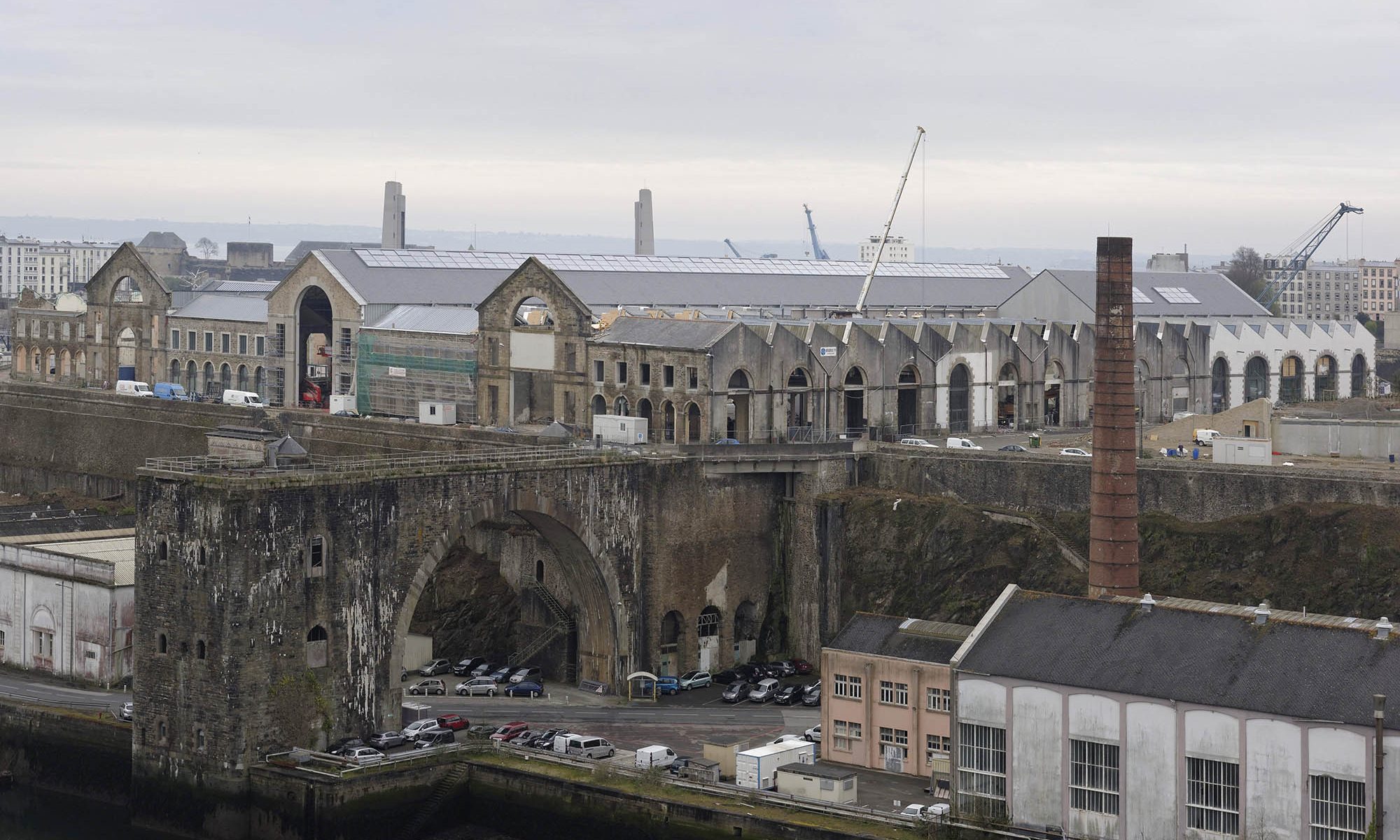Jean-François Mollière, Le Plateau des Capucins under construction, April 2015.
The Plateau des Capucins (Capucins plateau) in Brest owes its name to the monastery established there in the 17th century. The monks’ buildings were confiscated during the French Revolution (in 1791), and the plateau was then given to the Imperial Navy. In the middle of the 19th century, the present buildings were constructed to house workshops for the construction of military ships. These workshops remained in use until the end of the 20th century. Their closure in 2004 opened up new horizons for the development of the city of Brest, which acquired this high-potential site.
A period of major construction work followed, carried out according to Bruno Fortier’s general guide plan. This photograph shows the cranes above the imposing facades whose industrial aesthetics leave no doubt as to their character.
The Ateliers des Capucins opened its doors to the public in 2016 and was immediately adopted by the people of Brest. The buildings, restored with respect for the history of the site, boast the largest covered public space in Europe, which is very much appreciated by many in a city where the rain is a regular visitor. The Place des Machines (4,000 m2) is a generous space where children’s scooters and skateboards have right of way when it is not being used for large-scale events (festivals, fairs, film screenings, fashion shows, etc.). It is bordered by a media library, a cinema, an indoor climbing wall and other facilities. Exhibitions (like this one!) are held there. A few shops, cafés and restaurants complete the complex, which is still developing its identity.
An urban cable car over the Penfeld connects the Ateliers des Capucins to the rebuilt city. This enlarges the city centre and helps create a new heart of the metropolis.
Sonia de Puineuf

